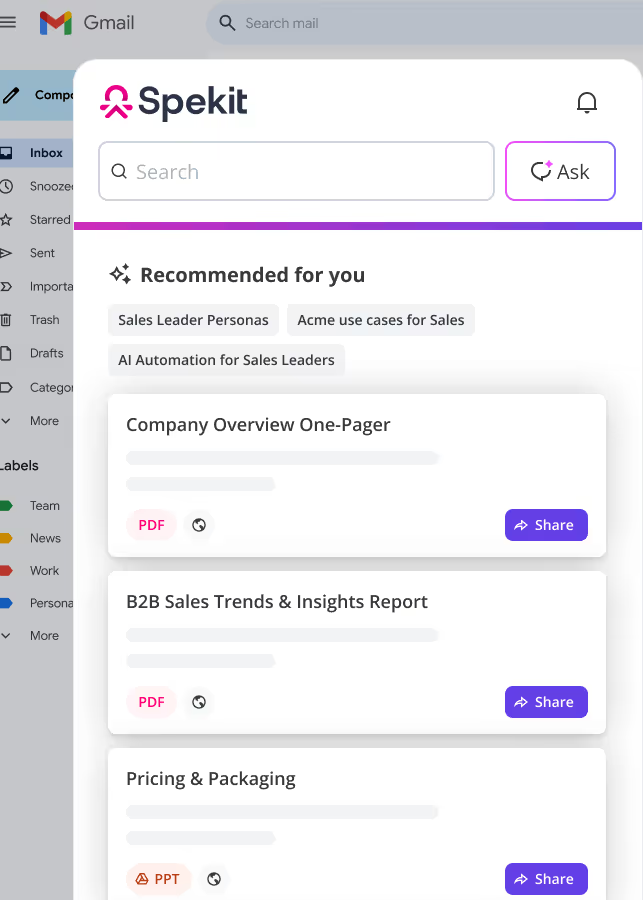Templates, playbooks, and guides
Enable your team in minutes with customizable content
on tools, revenue plays, best practices, and more.
Filters
Clear AllGoals & Outcomes
Thank you! Your submission has been received!
Oops! Something went wrong while submitting the form.
Tools & Software
Thank you! Your submission has been received!
Oops! Something went wrong while submitting the form.
Use Case
Thank you! Your submission has been received!
Oops! Something went wrong while submitting the form.
Try searching for: getting started
AI-powered enablement that works where your reps work
Instantly empower your reps with everything they need to succeed, at their fingertips, the moment they need it.








